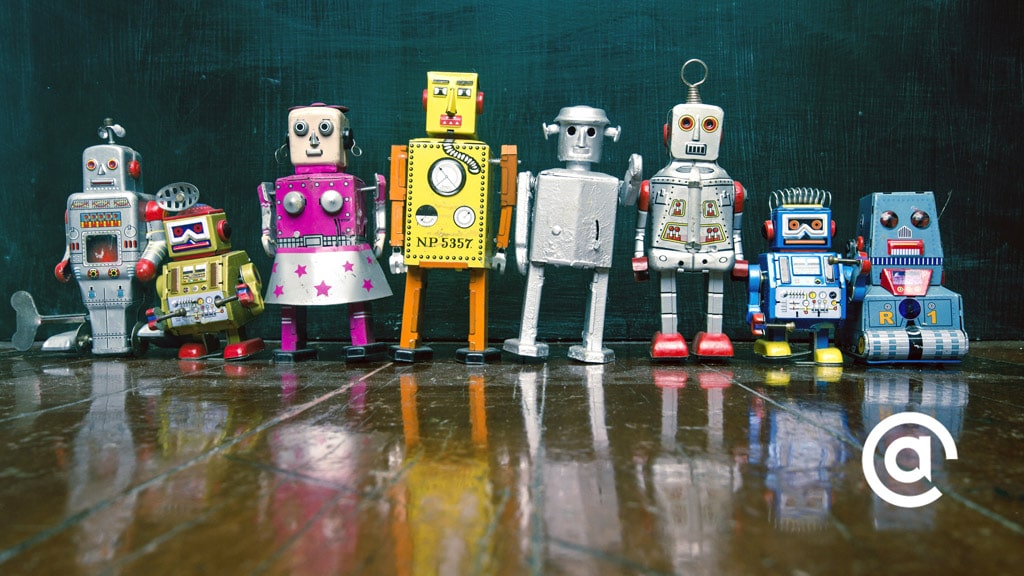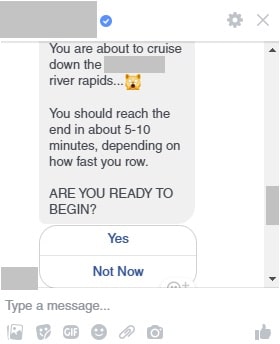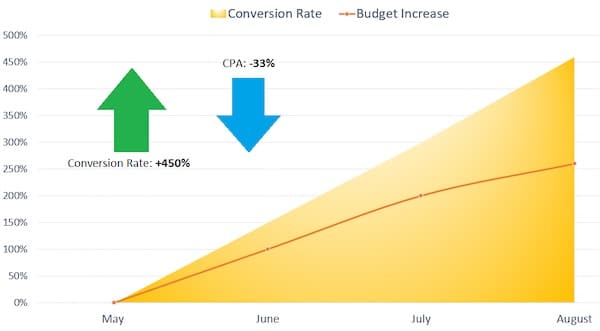Chatbots are cool. They can totally rock marketing programs. They require deep thinking and strategy. AND…chatbots are confusing as heck and can seem like a huge risk. At the same time, chat bots are not rocket science.
It’s time for on-the-fence marketers to explore the new world of bots to see where they can fit into powerful integrated marketing campaigns.
Our CMO Susan Wenograd has been vocal about chatbots since 2018 during their initial wave after release and has detailed her own use cases for SEMrush.
Embracing Chatbots
It has been about two years since chatbots emerged from beta. Not shockingly, adoption is still relatively low, especially among SMB’s & agencies. Interest is growing, but venturing into bot territory requires some bold thinking.
For those willing to take the leap, small businesses have a great opportunity to set-up chatbots right now and take advantage of powerful, automated interactions. Daniel Threlfall at Mobile Monkey echoes what we’ve seen across the agency world: “Messenger bots are marketers’ biggest opportunity, but its most underutilized asset.”
We’ve been strategically incorporating bots into integrated marketing programs, and in my experience, this approach has been a highly profitable strategy for engaging users on the biggest Messaging platform in the world. When done right, Chatbots allow brands to engage with customers in a highly engaging, highly efficient manner at any time the user is ready. Best of all, open rates are typically WAY higher than email.
#TRUTH – Chatbots are underutilized in 2019.
So, have you ever tried to make a chatbot on Facebook? If you’re like many marketers, you’ve heard about bots but are not sure they’re right for you (or your client).
Indecision abounds,specifically around ad features that aren’t baked directly into the Facebook Ads Suite or actions that require some human intervention to get right. Keep in mind, people felt the same about Facebook Lead Ads back in the day before they had direct CRM integration, and tools like Zapier weren’t as well-known.
Three things to consider before moving forward with chatbots…
1. Think through use cases.
Would a chatbot make sense at the top of the funnel by pre-qualifying users for your B2B sales team? Or are you a B2C marketer who wants users to browse products personalized for them before sending them over to your website?
2. Decide what software to use to build your chatbot.
If your team has the capacity to develop a custom solution, then go for it. For most of us, however, creating your own tech is likely a waste of time and money.
Here are five vendors of chatbot software that have good reputations in the industry. Pricing is usually by subscribers or number of accounts. There are pros and cons to each one. Understand precisely how you’ll use a chatbot, then do some competitive research before buying.
- Many Chat
- Mobile Monkey
- Chat Fuel
- Botsify
- ChatBot (LiveChat)
3. Don’t set-and-forget! Follow up immediately on chats.
You can quickly use email funnels for interactions or manually take control of the chat and respond to questions that aren’t automated. Someone internally at the company will have to monitor the Messenger Inbox during work hours.
You can hire fully-integrated chat services that have actual humans on staff trained to provide customer service on your behalf, but such an approach is typically geared toward enterprises.
Chat Bots In Action: A Case Study
We recently incorporated chat bots for a direct-to-consumer music publishing client. We set out to increase account creations and do so at a lower CPA than what the client previously experienced (sound familiar?). This is the “lose weight and gain muscle at the same time” argument marketers hear about a lot.
Our team audited the account back in April. The audit revealed that they had published a ton of great content and user engagement was high, but there were significant gaps in the user journey. Many who interacted with the brand never received a follow up.
We implemented a holistic funnel strategy incorporating their chatbot (and lead forms with eGuides) as mid-funnel engagement tools to push leads closer to the primary account creation and purchase objectives.
The Content
We quickly relaunched a Click-to-Messenger campaign for this B2C client, combining a chatbot that led users through a fun, interactive quiz to test their knowledge on music publishing. Many in the audience are fledgling independent musicians or others with an interest in the creative aspects of the music industry who didn’t know much about the legal and business side of things.
The experience opened with an ad encouraging users to sign up for a crash course via Facebook Messenger:
When someone clicked “Subscribe,” a messenger conversation opened, asking if they’d like to learn more about that topic:
When using chatbots, a good approach is to think of the journey in terms of multiple-choice or yes/no questions. The more prescriptive the journey, the less room for error. Avoid instances where the user may answer in their own terms, which can disrupt the script (thus confusing the bot).
Rather than gating the quiz right away with questions asking about personal information such as email, you script the chatbot to pull the email from their profile automatically, helping to eliminate a bail-out point in the beginning.
Pro-tip: although you can pull a user’s personal information when they initiate a conversation, it’s still a good practice to ask them if you are allowed to use that information for keeping in touch with them. People appreciate being given that choice.
For those who responded “Yes,” the quiz continued with more questions about the topic. There are opportunities to make such an experience even more engaging via gifs or memes, if appropriate for your brand. In reality, many users know they’re talking to a bot, so keep it light and don’t try to imbue too much humor into the responses to avoid sigh-worthy reactions.
Last note before we move on to results: For longer-form chats, set clear expectations at the outset. Think of those times you’ve started a survey only to realize about three minutes later that you’ve only completed 11%? Users value their time, so respect their time.
If people aren’t prepared to spend ten minutes answering questions, they can always come back later since the chat is saved in their inbox.
Once they reach the end (in this case, the quiz funnel), engage them even deeper with your brand. Consider options such as offering a coupon code to complete a purchase on your site or simply ask them for their email along with an invitation to subscribe to a newsletter. Depending on the type of chat, asking for personal information upfront is sometimes most efficient, because it only takes a few clicks to qualify that lead.
The Results
The chatbot described above ran in multiple funnel points, using exclusion audiences to separate those who had already interacted with the quiz. We avoided doubling up on promoting the same piece of content.
Results 6-Weeks In:
- Account Creation CPA decreased by 33% compared to the previous 6-week period.
- Expanding the budget 260% over the three-month test, our account creation rate (CVR) increased 450%…yup.
- Purchase ROAS jumped from 0.7 to 3.6
- The average customer value across the site increased 75% over 10-weeks.
Key Takeaways
- The chatbot tactic worked better for the top of the funnel or prospecting.
- We tested a 1% LLA of purchasers and an interest audience.
- The middle of the funnel campaign that utilized chatbots was about three times costlier to get Messenger conversations started. However, this same campaign produced conversions at a rate 2.2x higher than the top of funnel campaign.
- Testing the chatbot in these two campaigns highlighted how this tactic worked in different parts of the funnel. The results showed us it worked in both areas, but CPMs at the top of the funnel in this particular campaign were about a fourth of the cost of mid-funnel.
- For our purposes, we paused the mid-funnel campaign later in the quarter because other micro-conversion strategies such as lead forms converted retargeting audiences at a lower CPA.
Ready, Set, Chat
If you haven’t tried chatbots yet, Q4 would be a good time to start. The holiday season is the most expensive time to advertise on Instagram and Facebook. CPMs start jumping up mid-November.
Get those chatbots interacting with prospecting audiences before November rolls around. Take that audience pool you just built with Messenger ads and retarget the crap out of them on the tail end of Q4.
This strategy can help keep prospecting costs stable while nurturing your retargeting audience when everyone else is fighting for newsfeed space on top-funnel campaigns.
Do you have any use cases for chatbots you want to talk through? Tweet me at @timmhalloran!















